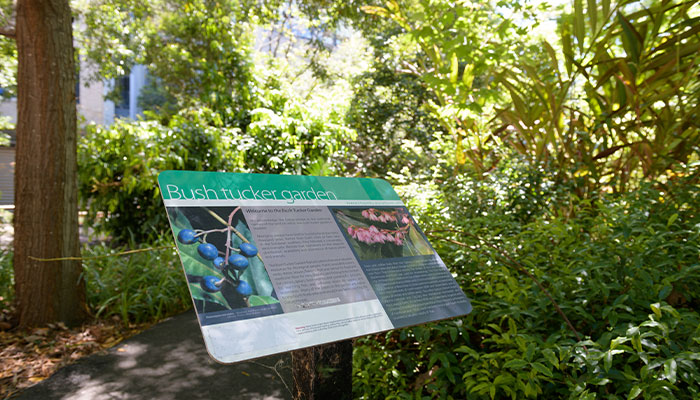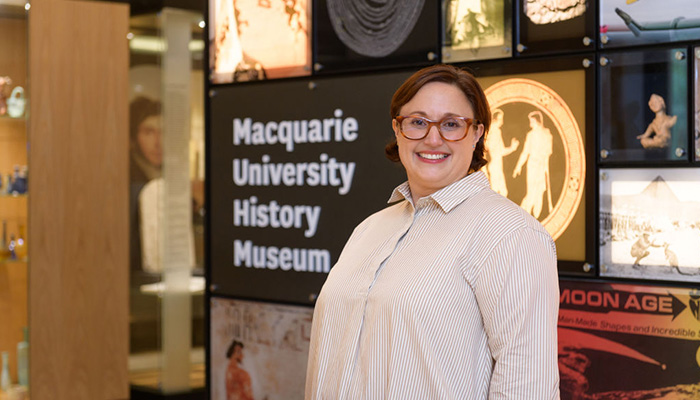Macquarie University campus is built on the land of the Wattamattagal people of the Darug nation and a new interactive app with videos, photos and quizzes can now take you on a walk of discovery to some of the most notable Indigenous places.

Meeting place: The Learning Circle was launched in 2014 to mark the longstanding relationship between the University and the Darug people.
“Many people are very keen to learn about our Indigenous cultural heritage but they don’t know how to go about it or where to look,” says Emily Sutton, the University’s Team Leader, Aboriginal Engagement and Outreach. “We’re lucky that Macquarie has so many Aborignal sites right on our doorstep.”
The free downloadable app, Walking Darug Country, uses GPS to lead people on a walking tour around the campus to 15 Indigenous sites. You’ll hear stories about people, plants and animals.
You can either go through all the sites or just pick particular ones, see photos, read about their importance or watch a video of the background story. Pop-up quizzes reinforce what you learned.

Pathways: Mars Creek, site of a stone arrangement that includes a woman-shaped rock.
One site is the Learning Circle located by the University Lake. Launched in 2014 to mark the longstanding relationship between the University and the Darug people, it’s where staff, students and the local community meet for frequent events to discuss byalla - “the business of life”.
“It’s just a lovely yarning space,” says Sutton. “Lecturers use it to get outside for a lesson, we’ve used it to launch different strategies and plans for the university, and there’s a fire pit where we’ve held public movie nights and other outdoor gatherings.”
Another site is Mars Creek, celebrating the importance of water for the Darug community. In 1998, Aunty Edna Marion Watson and Aunty Patricia Karbo Jarvis created a stone arrangement that includes a special woman-shaped rock decorated with traditional carvings and others with animal and human footprints that leads you to other carvings.

Plant wonders: The App includes a video tour around the University's bush tucker garden.
If you’re interested in edible and medicinal bush foods, Paul Sinclair, an Anaiwan man from north-west NSW, leads you in a video around the campus bush tucker garden where you’ll see and smell Lillly Pilly, native raspberries and other plants used as mosquito repellent or to treat the flu, as well as for tools, digging sticks and spears.
The Wattamattagal clan are the people of the wallumai (the black snapper) which used to live in the mangroves around campus. According to elders, the black snapper is a shy but clever fish that uses the shadows and patterns created by the mangroves to protect the younger fish.
“LIke the wallumai, at Walanga Muru [the Indigenous students’ space] we support our students to choose the right path and navigate the obstacles of life to become resilient future leaders,” says Sutton.
You can download Walking Darug Country free at the App Store for i-Phone or Android.



